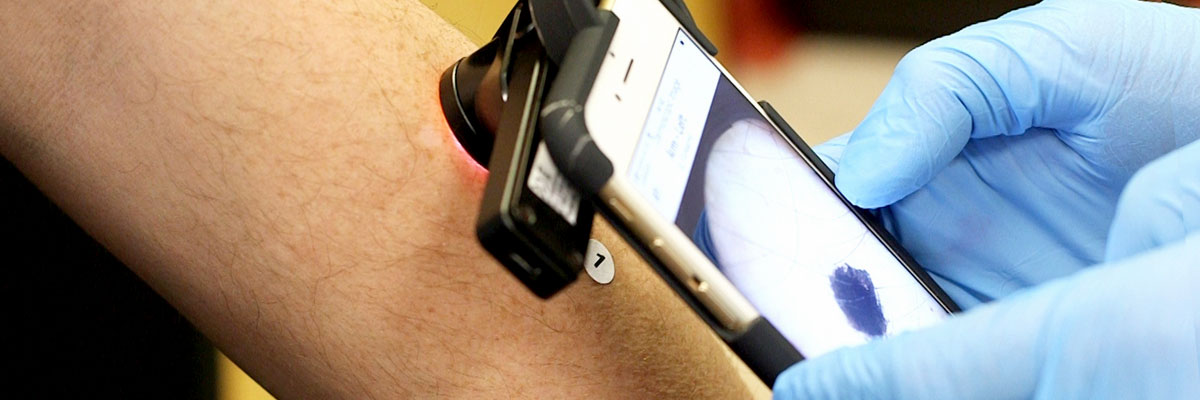
During your appointment
At the Teledermatology clinic, a qualified clinical photographer will take a series of digital photographs of your skin lesion. The photographs will be sent to a dermatologist for remote assessment to see if you need further treatment.
You will not have a face-to-face consultation with a doctor at this appointment.
The photographer may use two different devices: a camera phone which uses artificial intelligence to analyse the lesion to see if you need to see a dermatologist, and a professional digital camera.
They will photograph a:
- general view of the area of interest to establish the location of your lesion
- detailed close up using a specialised lens called a dermatoscope
The dermatoscope allows the photographer to capture highly detailed images of your lesion, by pressing gently against the surface of the skin. This should not hurt. It may not be possible to photograph some lesions using the dermatoscope. This will be explained to you at your appointment.
Images taken on the camera phone will be encrypted and electronically transferred, by secure means, so they can be analysed by DERM. The software will then provide a decision on whether or not the lesion needs to be seen by a consultant dermatologist at University Hospitals Birmingham NHS Foundation Trust (UHB).
Once photography is complete, your images will be securely saved and uploaded to your Electronic Patient Record, which will allow the Dermatology team to assess the report and review your clinical photographs.
For patients referred by their GP receptionist for the primary care service, a clinical photographer will take images of the lesions that you described to your GP receptionist. This will have been explained to you when you spoke to your GP receptionist. If you have more than two lesions, contact the primary care service who will agree the next steps with you.
Before your appointment
Please bring your reading glasses as we will give you some leaflets to read before your appointment.
If it is possible, please mark your lesion before your appointment to assist our clinical photographers in identifying it. You can ask a family member or friend to help if you need. Suitable ways to mark the lesion are:
- Place a waterproof plaster next to the lesion and draw an arrow on the plaster in the direction of the lesion concerned
- Taking a photograph of the lesion on a mobile phone and taking it along to your appointment
Last reviewed: 13 March 2023